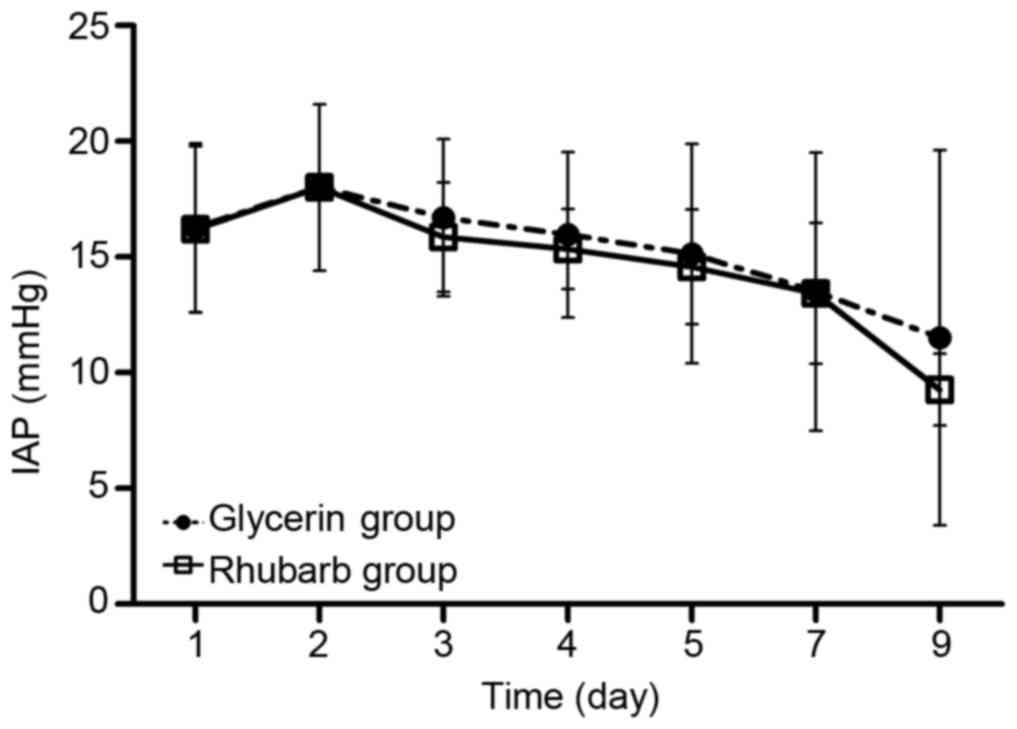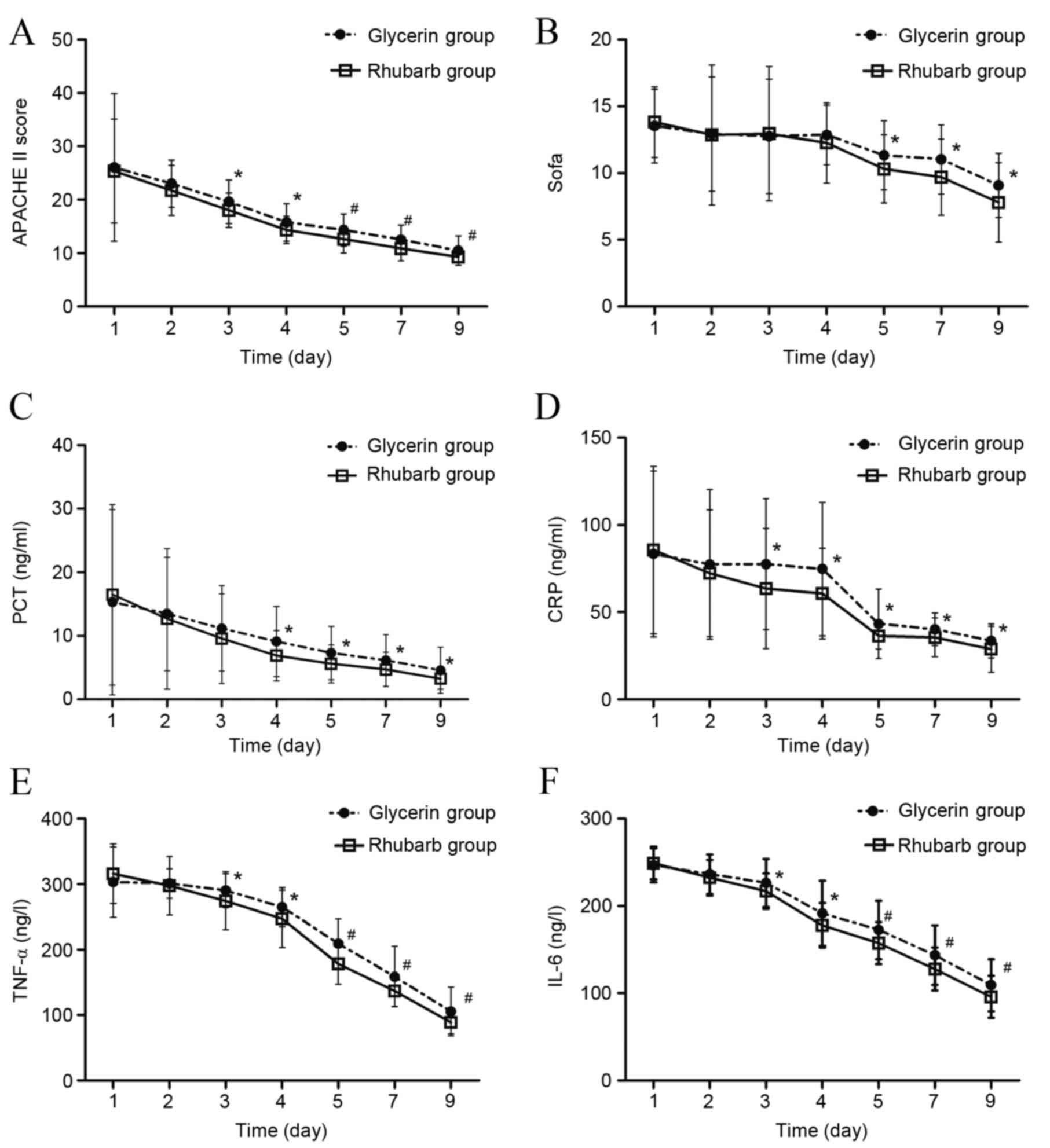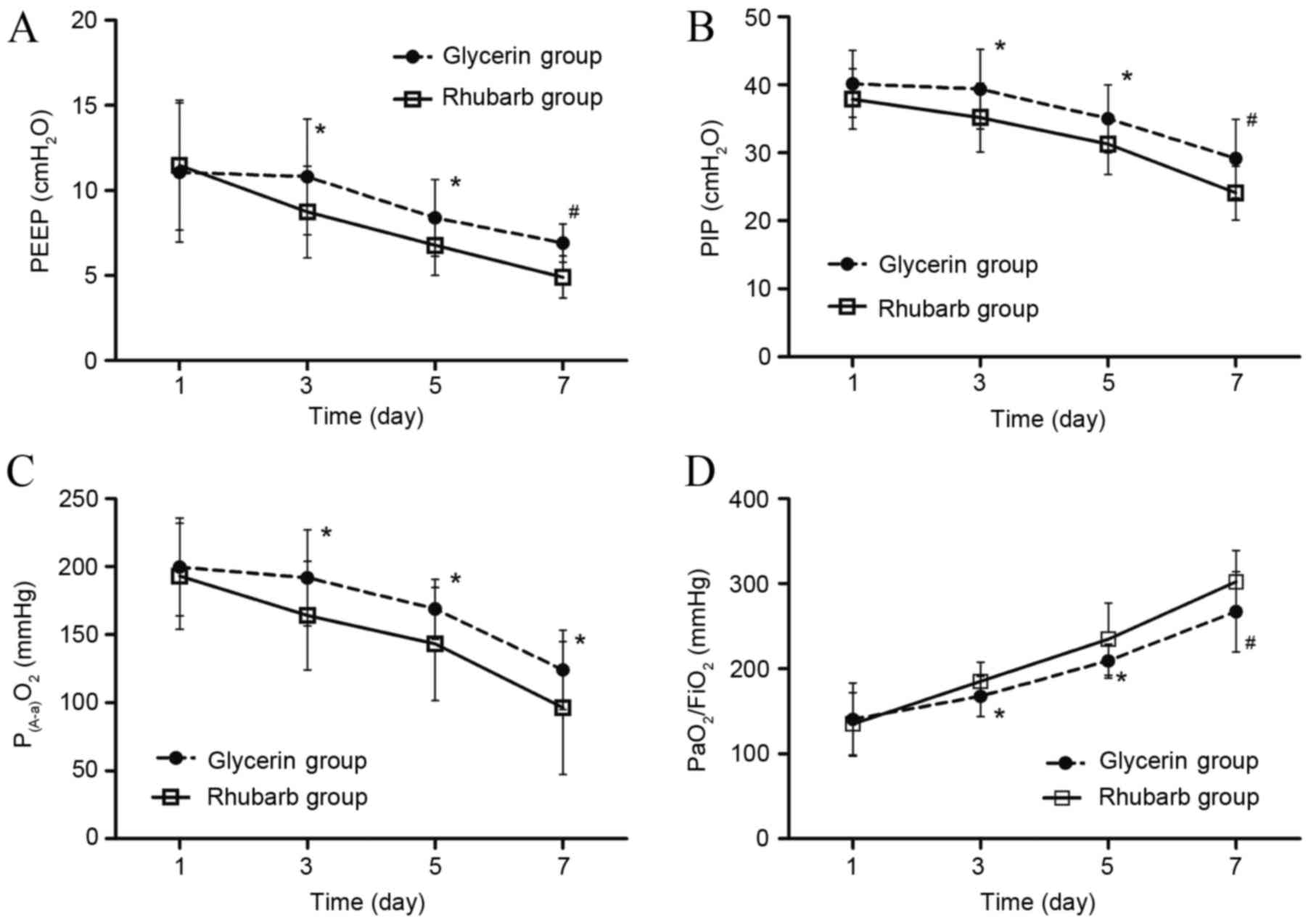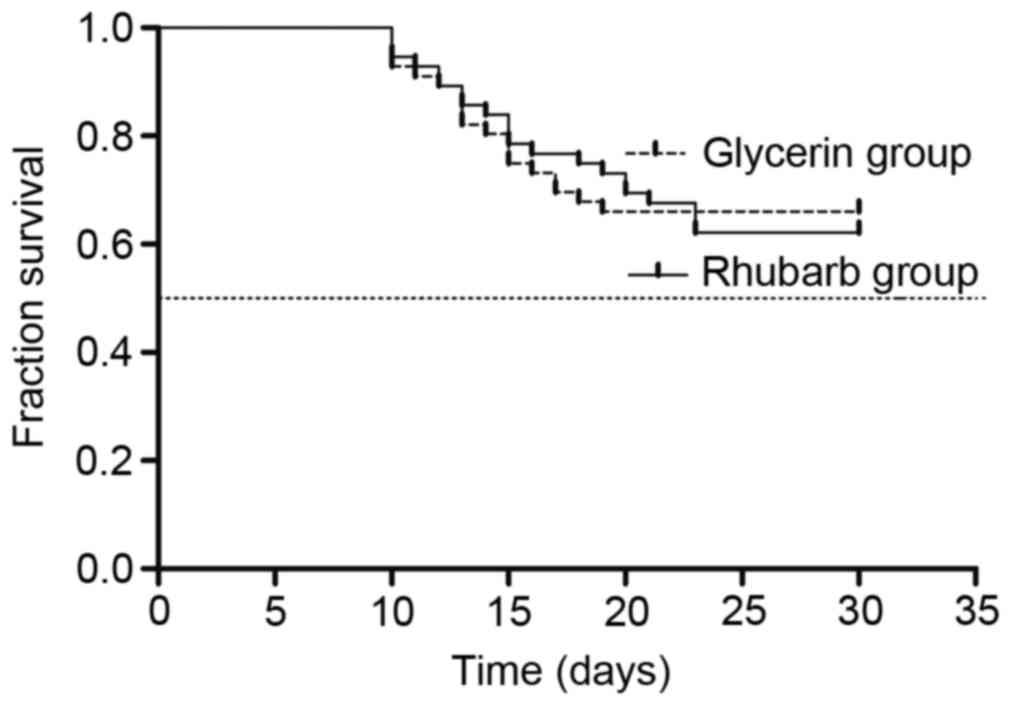|
1
|
Sugrue M: Abdominal compartment syndrome.
Curr Opin Crit Care. 11:333–338. 2005. View Article : Google Scholar : PubMed/NCBI
|
|
2
|
Schachtrupp A, Lawong G, Afify M, Graf J,
Toens C and Schumpelick V: Fluid resuscitation preserves cardiac
output but cannot prevent organ damage in a porcine model during 24
h of intraabdominal hypertension. Shock. 24:153–158. 2005.
View Article : Google Scholar : PubMed/NCBI
|
|
3
|
Balogh ZJ, Lumsdaine W, Moore EE and Moore
FA: Postinjury abdominal compartment syndrome: From recognition to
prevention. Lancet. 384:1466–1475. 2014. View Article : Google Scholar : PubMed/NCBI
|
|
4
|
Ganeshanantham G, Walsh SR and Varty K:
Abdominal compartment syndrome in vascular surgery-A review. Int J
Surg. 8:181–185. 2010. View Article : Google Scholar : PubMed/NCBI
|
|
5
|
Malbrain ML, Chiumello D, Pelosi P, Wilmer
A, Brienza N, Malcangi V, Bihari D, Innes R, Cohen J, Singer P, et
al: Prevalence of intra-abdominal hypertension in critically ill
patients: A multicentre epidemiological study. Intensive Care Med.
30:822–829. 2004. View Article : Google Scholar : PubMed/NCBI
|
|
6
|
Ke L, Tong ZH, Ni HB, Ding WW, Sun JK, Li
WQ, Li N and Li JS: The effect of intra-abdominal hypertension
incorporating severe acute pancreatitis in a porcine model. PLoS
One. 7:e331252012. View Article : Google Scholar : PubMed/NCBI
|
|
7
|
Ke L, Ni HB, Tong ZH, Li WQ, Li N and Li
JS: The importance of timing of decompression in severe acute
pancreatitis combined with abdominal compartment syndrome. J Trauma
Acute Care Surg. 74:1060–1066. 2013. View Article : Google Scholar : PubMed/NCBI
|
|
8
|
de Waele JJ, Hoste EA and Malbrain ML:
Decompressive laparotomy for abdominal compartment syndrome-a
critical analysis. Crit Care. 10:R512006. View Article : Google Scholar : PubMed/NCBI
|
|
9
|
Malbrain ML, Chiumello D, Pelosi P, Bihari
D, Innes R, Ranieri VM, Del Turco M, Wilmer A, Brienza N, Malcangi
V, et al: Incidence and prognosis of intraabdominal hypertension in
a mixed population of critically ill patients: A multiple-center
epidemiological study. Crit Care Med. 33:315–322. 2005. View Article : Google Scholar : PubMed/NCBI
|
|
10
|
Kirkpatrick AW, Roberts DJ, De Waele J,
Jaeschke R, Malbrain ML, De Keulenaer B, Duchesne J, Bjorck M,
Leppaniemi A, Ejike JC, et al: Intra-abdominal hypertension and the
abdominal compartment syndrome: Updated consensus definitions and
clinical practice guidelines from the World Society of the
Abdominal Compartment Syndrome. Intensive Care Med. 39:1190–1206.
2013. View Article : Google Scholar : PubMed/NCBI
|
|
11
|
Mohmand H and Goldfarb S: Renal
dysfunction associated with intra-abdominal hypertension and the
abdominal compartment syndrome. J Am Soc Nephrol. 22:615–621. 2011.
View Article : Google Scholar : PubMed/NCBI
|
|
12
|
Wan B, Fu H, Yin J and Xu F: Efficacy of
rhubarb combined with early enteral nutrition for the treatment of
severe acute pancreatitis: A randomized controlled trial. Scand J
Gastroenterol. 49:1375–1384. 2014.PubMed/NCBI
|
|
13
|
Cui YL, Wang L, Tian ZT, Lin ZF and Chen
DC: Effect of rhubarb pre-treatment on intestinal microcirculation
in septic rats. Am J Chin Med. 42:1215–1227. 2014. View Article : Google Scholar : PubMed/NCBI
|
|
14
|
Chen DC and Wang L: Mechanisms of
therapeutic effects of rhubarb on gut origin sepsis. Chin J
Traumatol. 12:365–369. 2009.PubMed/NCBI
|
|
15
|
Blaser A Reintam, Malbrain ML, Starkopf J,
Fruhwald S, Jakob SM, De Waele J, Braun JP, Poeze M and Spies C:
Gastrointestinal function in intensive care patients: Terminology,
definitions and management. Recommendations of the ESICM Working
Group on Abdominal Problems. Intensive Care Med. 38:384–394. 2012.
View Article : Google Scholar : PubMed/NCBI
|
|
16
|
Malbrain ML, Cheatham ML, Kirkpatrick A,
Sugrue M, Parr M, De Waele J, Balogh Z, Leppäniemi A, Olvera C,
Ivatury R, et al: Results from the International Conference of
Experts on Intra-abdominal Hypertension and Abdominal Compartment
Syndrome. I. Definitions. Intensive Care Med. 32:1722–1732. 2006.
View Article : Google Scholar : PubMed/NCBI
|
|
17
|
Cheatham ML, Malbrain ML, Kirkpatrick A,
Sugrue M, Parr M, De Waele J, Balogh Z, Leppäniemi A, Olvera C,
Ivatury R, et al: Results from the International Conference of
Experts on Intra-abdominal Hypertension and Abdominal Compartment
Syndrome. II. Recommendations. Intensive Care Med. 33:951–962.
2007. View Article : Google Scholar : PubMed/NCBI
|
|
18
|
Knaus WA, Draper EA, Wagner DP and
Zimmerman JE: APACHE II: A severity of disease classification
system. Crit Care Med. 13:818–829. 1985. View Article : Google Scholar : PubMed/NCBI
|
|
19
|
Vincent JL, De Mendonça A, Cantraine F,
Moreno R, Takala J, Suter PM, Sprung CL, Colardyn F and Blecher S:
Use of the SOFA score to assess the incidence of organ
dysfunction/failure in intensive care units: Results of a
multicenter, prospective study. Working group on ‘sepsis-related
problems’ of the European Society of Intensive Care Medicine. Crit
Care Med. 26:1793–1800. 1998. View Article : Google Scholar : PubMed/NCBI
|
|
20
|
de Waele JJ, De Laet I, Kirkpatrick AW and
Hoste E: Intra-abdominal Hypertension and Abdominal Compartment
Syndrome. Am J Kidney Dis. 57:159–169. 2011. View Article : Google Scholar : PubMed/NCBI
|
|
21
|
Malbrain ML and Cheatham ML: Definitions
and pathophysiological implications of intra-abdominal hypertension
and abdominal compartment syndrome. Am Surg. 77 Suppl 1:S6–S11.
2011.PubMed/NCBI
|
|
22
|
Ke L, Tong ZH, Li WQ, Wu C, Li N, Windsor
JA, Li JS and Petrov MS: Predictors of critical acute pancreatitis:
A prospective cohort study. Medicine (Baltimore). 93:e1082014.
View Article : Google Scholar : PubMed/NCBI
|
|
23
|
Li H, Yang T, Zhou H, Du J, Zhu B and Sun
Z: Emodin Combined with Nanosilver Inhibited Sepsis by
Anti-inflammatory Protection. Front Pharmacol. 7:5362017.
View Article : Google Scholar : PubMed/NCBI
|
|
24
|
Li C, Gui P, He X and Yang H: Actions of
NO and INOS on endotoxin induced rat acute lung injury and effect
of rhubarb on them. J Tradit Chin Med. 20:216–222. 2000.PubMed/NCBI
|
|
25
|
Li C, Zhou J, Gui P and He X: Protective
effect of rhubarb on endotoxin-induced acute lung injury. J Tradit
Chin Med. 21:54–58. 2001.PubMed/NCBI
|
|
26
|
Zhang R, Kang KA, Piao MJ, Lee KH, Jang
HS, Park MJ, Kim BJ, Kim JS, Kim YS, Ryu SY, et al: Rhapontigenin
from Rheum undulatum protects against oxidative-stress-induced cell
damage through antioxidant activity. J Toxicol Environ Health A.
70:1155–1166. 2007. View Article : Google Scholar : PubMed/NCBI
|



















